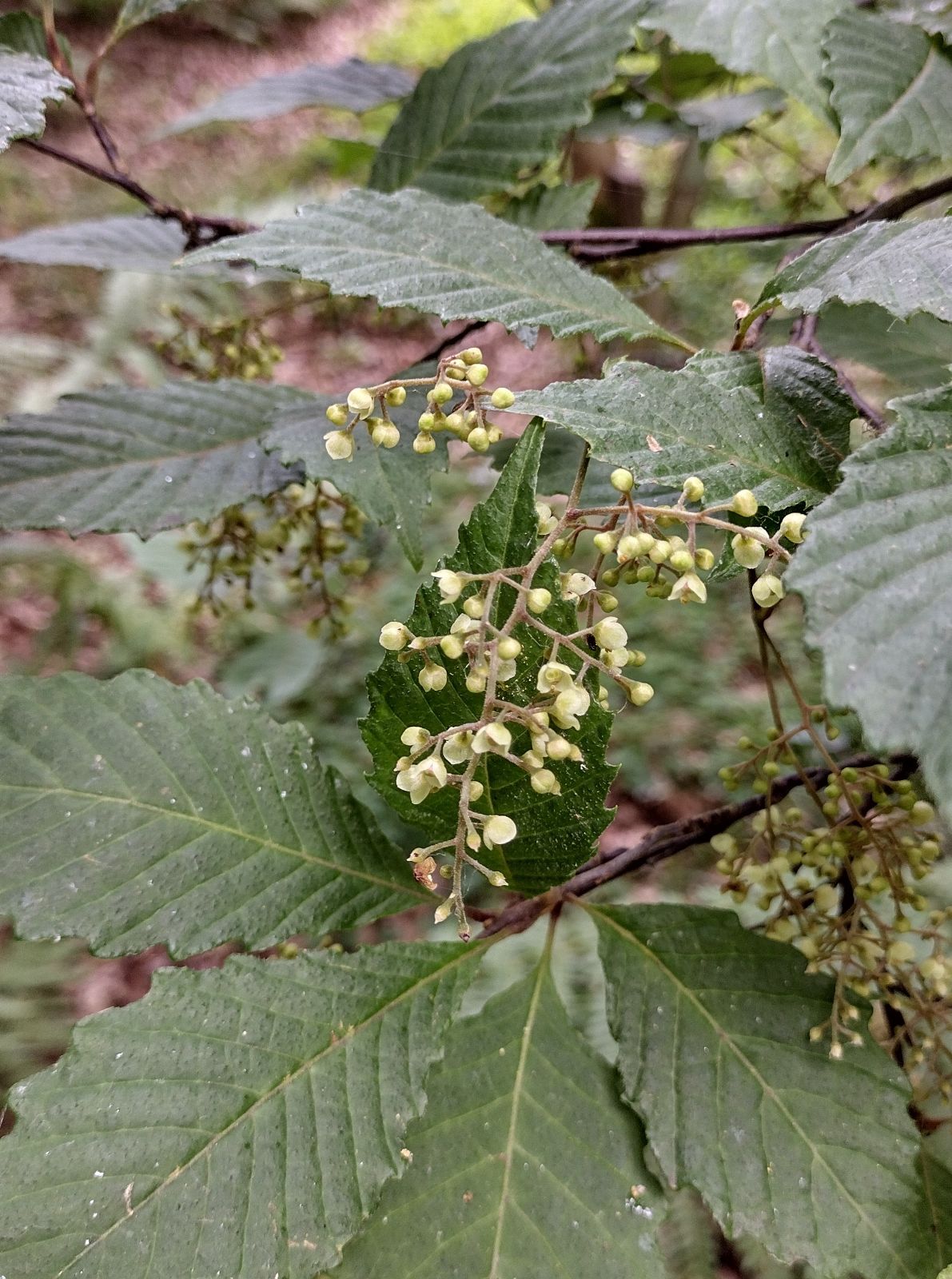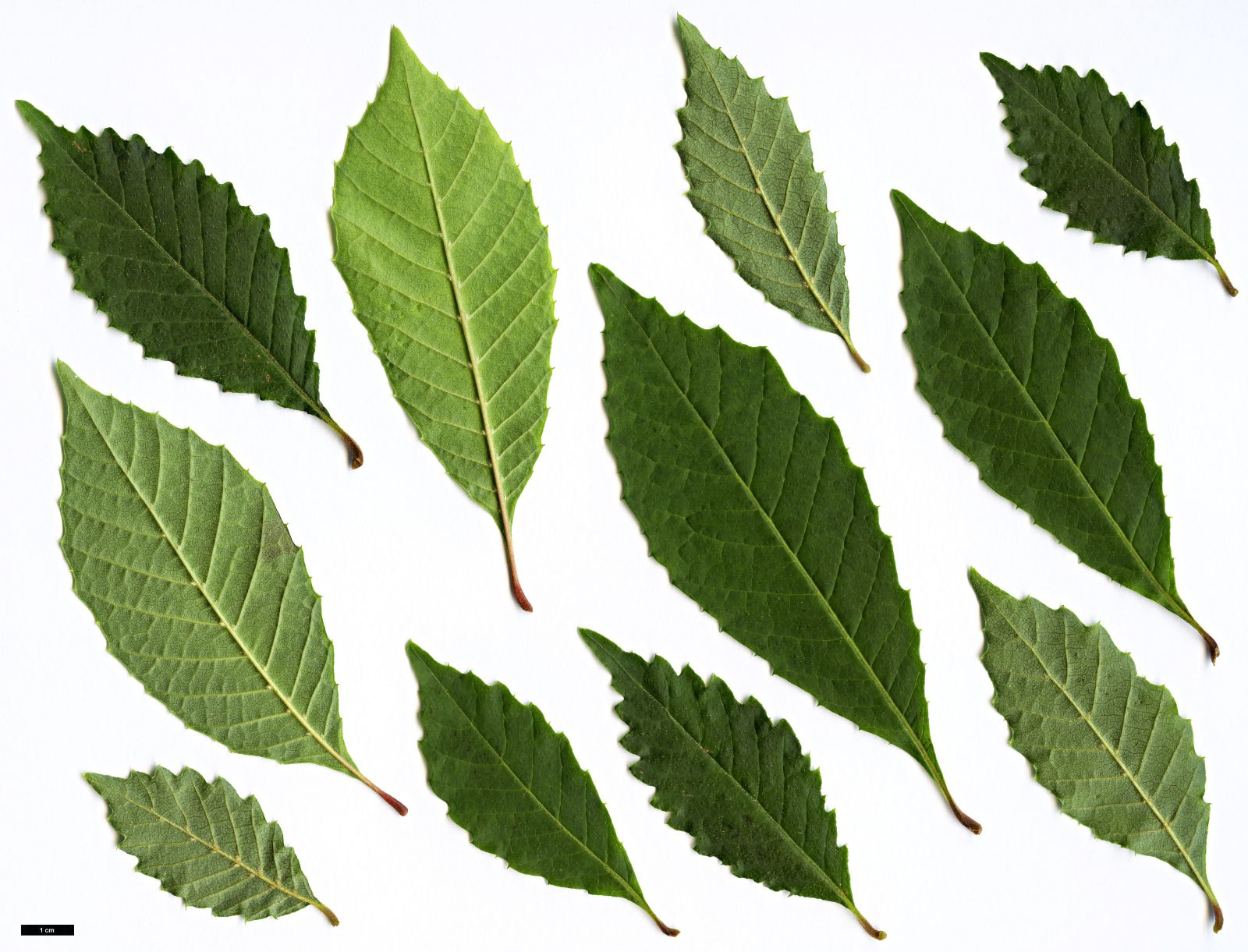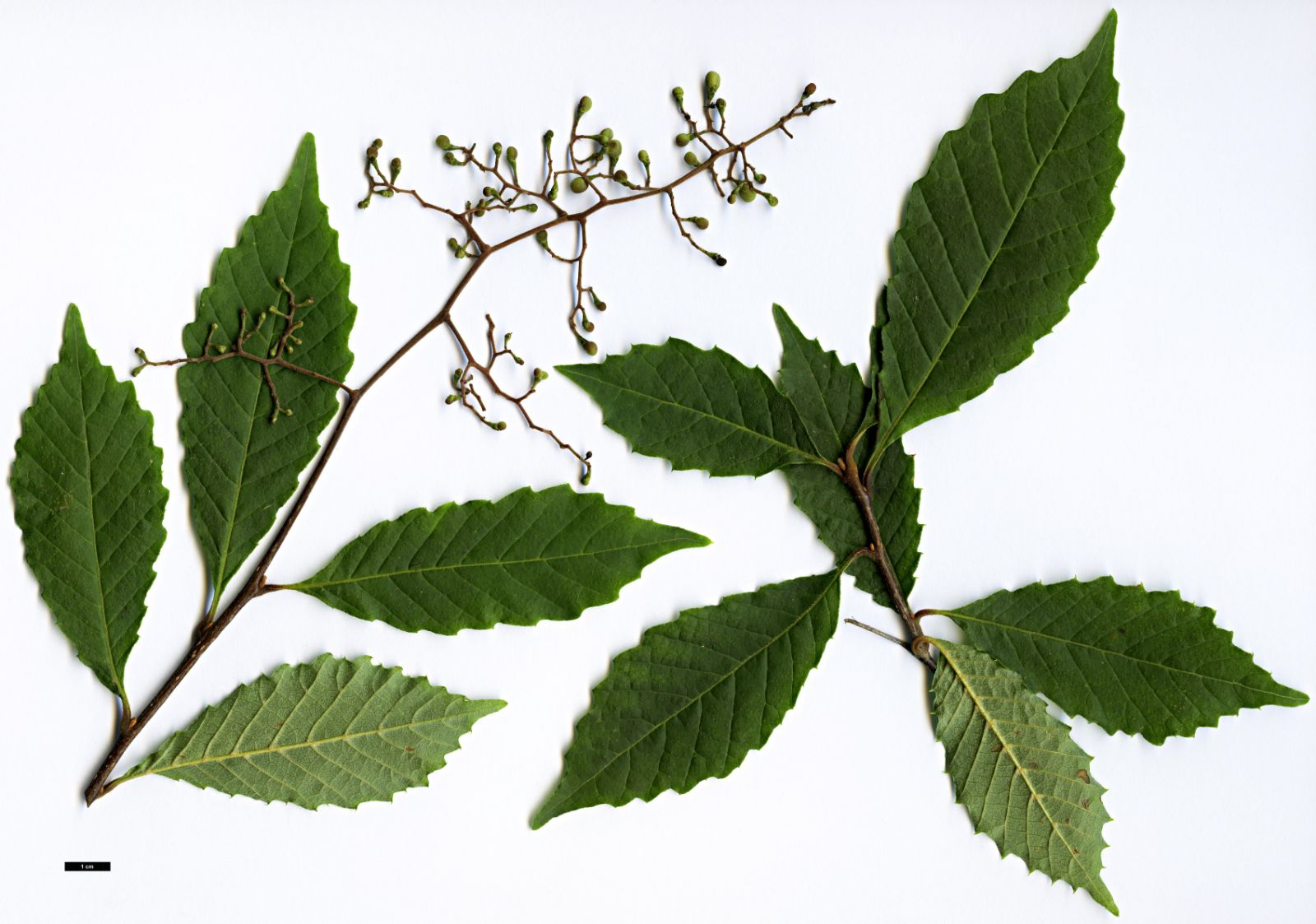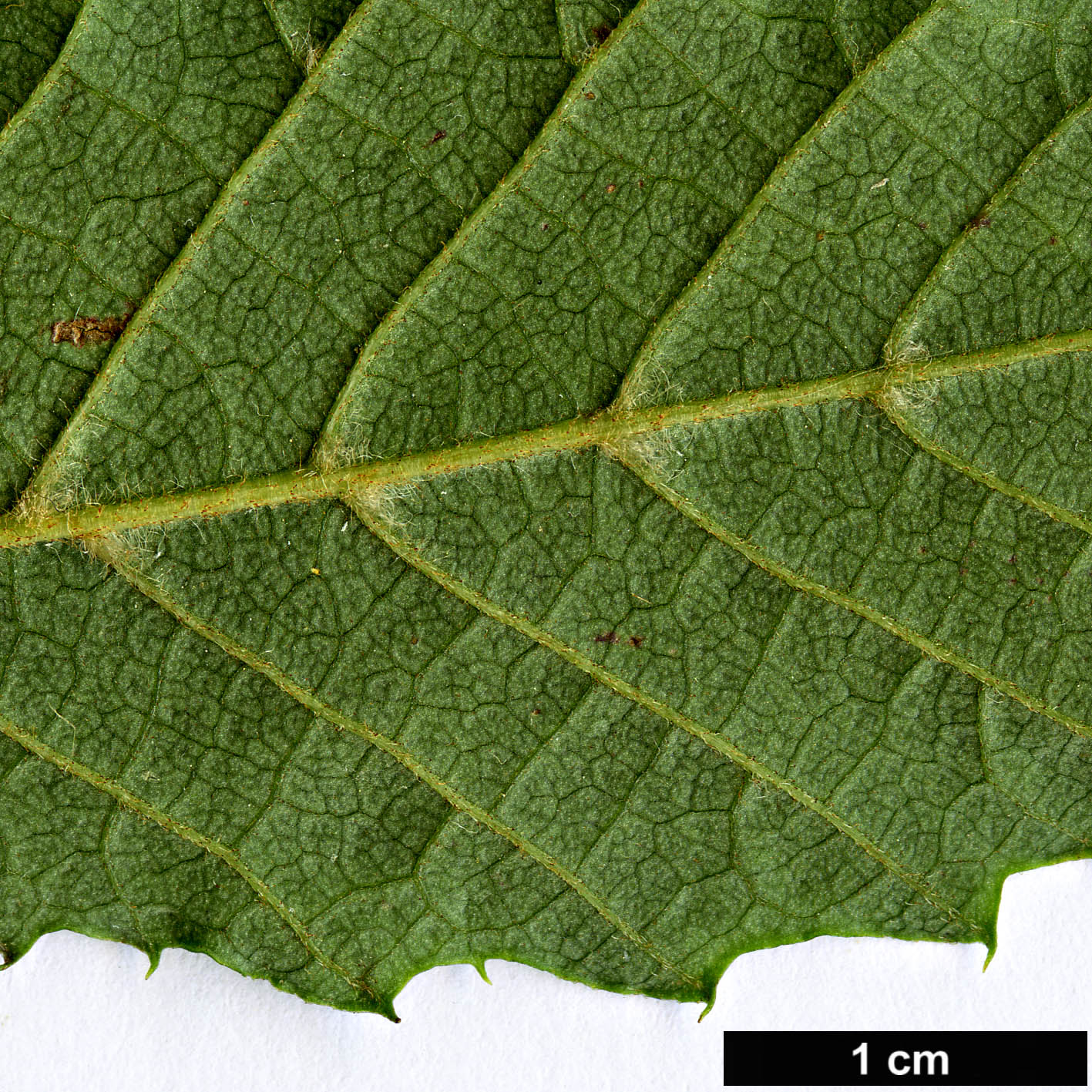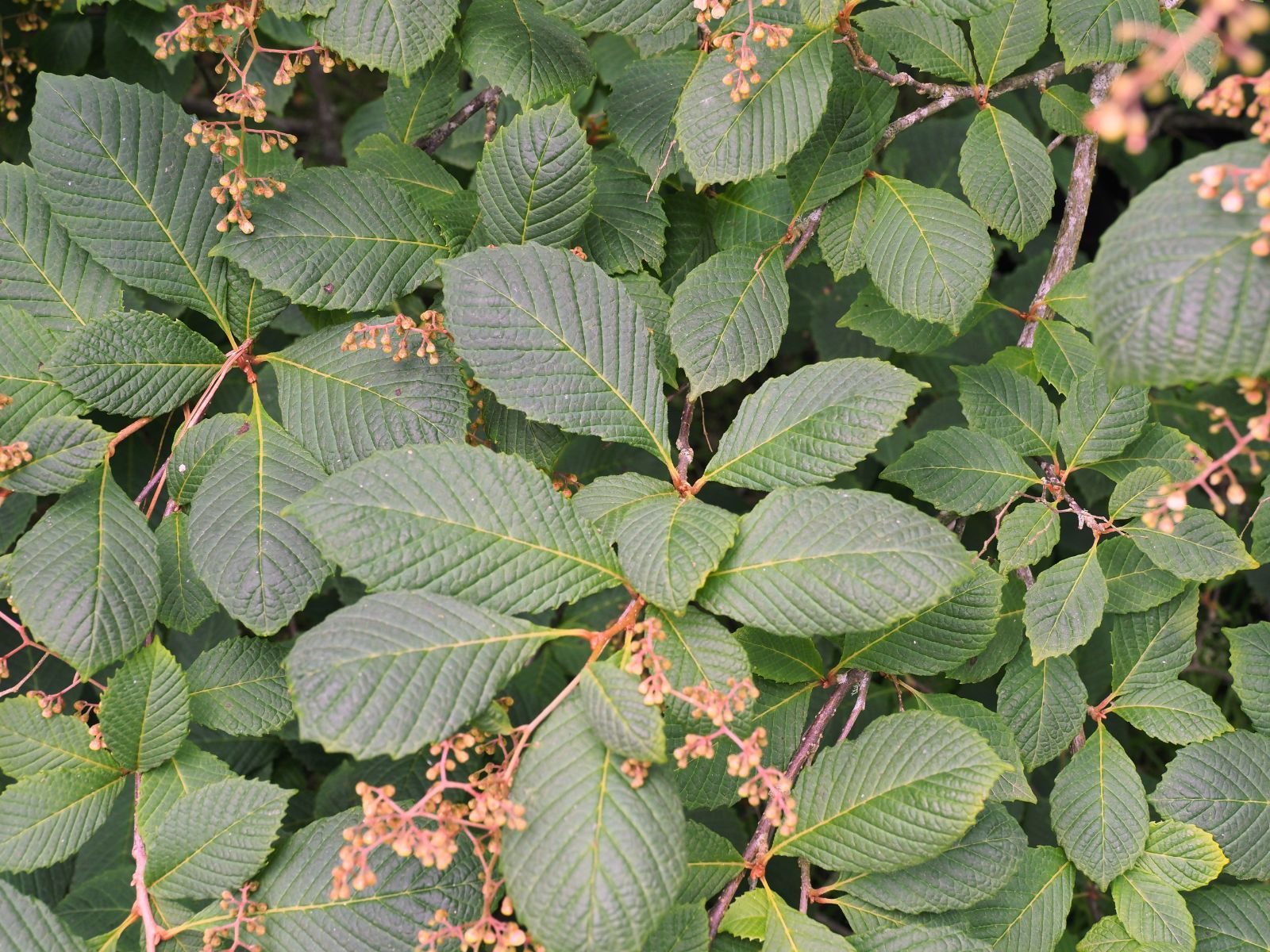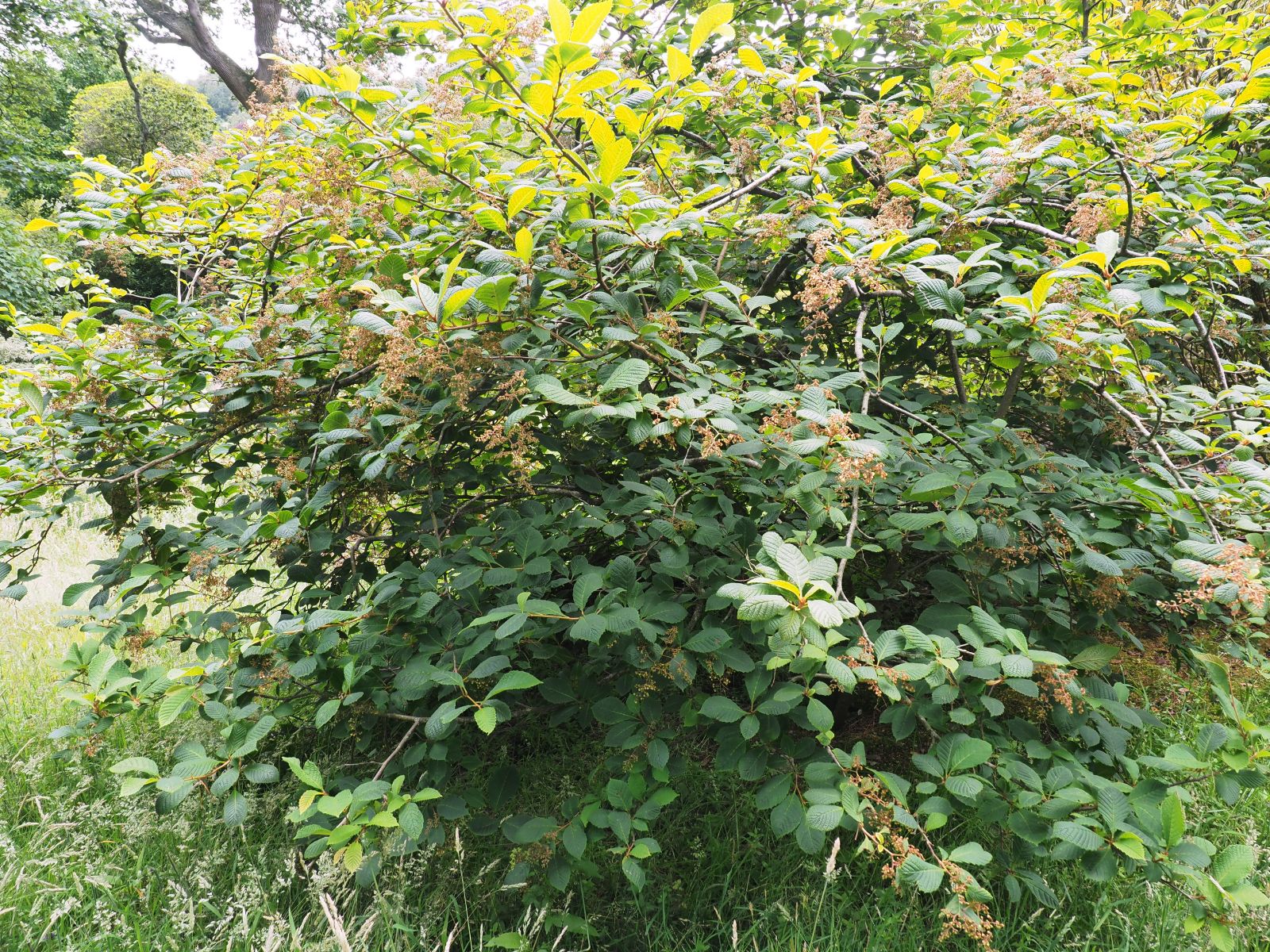Meliosma tenuis
Sponsor
Kindly sponsored by
Lady Diana Rowland
Credits
Owen Johnson (2022)
Recommended citation
Johnson, O. (2022), 'Meliosma tenuis' from the website Trees and Shrubs Online (treesandshrubsonline.
Deciduous, multistemmed shrub to 7 m. Bark smooth, grey. Twigs purplish, downy when young; buds elongated, covered in tawny down. Leaves 3–16 × 1–7 cm, oval to obovate, with a narrowly tapered base and an abrupt slender point; dark green above with scattered hairs, pale beneath with tufts of pale down under the vein axils; veins in (6–)8–14(–15) pairs, sometimes branching, running to the margin where they serve a coarse, mucronate tooth; petiole 6–10 mm, pubescent. Flower-head erect or drooping, small (5–15 cm long), with rather zig-zag stalks and side-stalks often reflexed. Sepals 5. Petals dull white. Fruit c. 4 mm wide, globose, black with a purple bloom. (Bean 1981; van Beusekom 1971).
Distribution Japan Honshu, Shikoku, Kyushu
Habitat Common in deciduous forests, mostly from 600–1200 m asl.
USDA Hardiness Zone 5
RHS Hardiness Rating H6
Conservation status Not evaluated (NE)
The only Meliosma endemic to Japan was submerged by Frits van Beusekom in his 1971 monograph on the Asiatic taxa as a subspecies of the Himalayan M. dilleniifolia, which has larger leaves and bigger, more densely packed flower-heads. Following the treatment of Plants of the World Online (Plants of the World Online 2022) it is here restored to species rank as M. tenuis. This species was introduced to Britain in 1915, and plants were established at the Royal Botanic Gardens, Kew, and at Wakehurst Place in West Sussex (Bean 1981). A large bush, 7 m tall and with trunks to 18 cm thick in 1993, grew in a sheltered but sunny corner of the author’s local public park, Alexandra Park in Hastings, having been added under this name in the middle twentieth century by an enthusiastic former Superintendent, Mr Cassidy. Although not as elegant in foliage or habit as the larger-growing deciduous Meliosma, it had the advantage of producing its richly scented dull white flower-heads in abundance each June. This plant died, apparently of old age, in 2012, and a replacement sourced by the Friends of Alexandra Park from Burncoose Nurseries failed after getting strimmed by contract gardeners. Charles Williams recommends dappled shade rather than full sun for the species’ establishment (Burncoose Nurseries 2022). Several plants at Caerhays Castle have been received from Dutch nurseries under various names within the M. dillenniifolia group, but seem likely to be M. tenuis; a couple of these have died aged only ten to fifteen years, possibly as a result of summer drought (Williams 2020).
Currently, the species is also represented in the UK by bushes at the Royal Botanic Garden Edinburgh from ESJE 287 (collected in 2006), at Howick Hall in Northumberland from H&M 2043, and at the Sir Harold Hillier Gardens, with a pair of 2012 accessions (Royal Botanic Garden Edinburgh 2022; Tree Register 2022). There is also a 1986 planting at Ray Wood, Castle Howard, in North Yorkshire, which remains ‘knee-high’ (J. Grimshaw pers. comm. 2021). In France, it is offered by De la Fleur au Miel at Huttendorf.
Two 1954 accessions grow at the Washington Park Arboretum in Seattle, and the species was also grown by Barry Yinger at Brookside Gardens in the continental climate of Maryland. Randy Stewart, citing Yinger’s experience, suggests that Meliosma tenuis is the hardiest of its genus, withstanding 33°C of frost without damage, and should be trialled in the American Midwest (Stewart 2022). Against this should be set W.J. Bean’s observation that plants at Kew suffered badly in the winter of 1928–9 (Bean 1981); presumably ample summer heat is needed to ripen the young growth.

